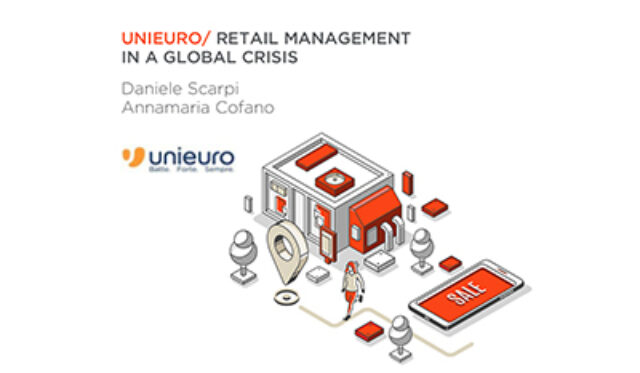
Covid-19 marks a dramatic watershed for many companies, between the healthy and living companies and those experiencing difficulties and at risk of disappearing, between the fast the slow ones, between those that will restart well and those that will struggle.
This is happening because Covid-19 itself is, for strategies and marketing activities, an accelerator of several, already pre-existing structural gaps, in particular between strongly marketing-oriented companies and those that do not have it or have less. Probably, for marketing to support the after-Covid recovery, some companies will have to greatly accelerate on few strategic aspects.
Is a new marketing for the after-Covid recovery really needed? Or, rather, what is needed is accelerating on certain successful development directions that were winning already in the pre-Covid context?
This dramatic health emergency is not unfortunately the only crisis we experienced in the first 20 years of the twenty-first century, which started with the tragedy of the Twin Towers, followed by continuous upheavals: from the terroristic attacks in Europe to economic and currency emergencies, through the crisis of 2008.
It is generally said that in today’s world “the only certainty is uncertainty”. This statement undoubtedly has more than a kernel of truth and some empirical evidence to support it. However, faced with too much uncertainty a possible risk is to take a perspective that is well illustrated in the timeless work “Il Gattopardo” (The Leopard) by Giuseppe Tomasi di Lampedusa, “For things to remain the same, everything must change”.
In summary, the risk is that some companies will go back to after-Covid marketing with the same approach of pre-Covid marketing, ignoring the watershed that Covid-19 is, classifying it as a simple health emergency, hopefully solved.
What can marketing do to foster the restart? It can provide some certainties, or at least some references, highlighting the lynchpins and then the needs of change and acceleration. There appear to be in particular two lynchpins: the centrality of value for the customer as a guiding light and North Star of the value creation process and the relationships with customers, as fundamental relational capital for every company.
Covid-19 highlighted some acceleration elements companies need to focus on to avoid remaining structurally behind in their competitive positions, and in particular the following:
- The centrality of brand value, which summarizes and transfers to customers the company sound values, a structured vision and a mission, a long-term company- and stakeholders-centered orientation, not simply focusing on short-term gains. In this regard, we should think of the exceptional effort made by Giorgio Armani himself and his company. Armani not only quickly converted the company’s production to produce masks and coats for the health emergency, but he promoted a more general reflection of the entire fashion world, and not simply in relation to the sustainability of the pre-emergency business models. In the era of Covid-19 and after-Covid, probably there is space only for those companies that have value and values, that really have something to say to and give their customers, a sound value proposition, a structured strategy that extends beyond emergencies;
- A sound marketing orientation, having a long-term perspective and strong resilience. Paraphrasing a quotation that has caused much debate and transferring it to the business economic and marketing field, “customers don’t forget and will remember”. Indeed customers “sense” and attach value to the company that is close to them when they experience difficulties, which raises service levels instead of lowering them, which adds value, which does not change prices, which engages. A well-known sports apparel company in Germany, a few days after the beginning of the lockdown, found in its lease contracts a legal loophole allowing it to withdraw from the payment of rent. A few days later, the media response to this move was such that the company backtracked, precisely because of the risk their customers might remember it;
- A systematic competition on value and not on price. As the company strategy and marketing theory and practice highlight, price wars must be systematically avoided, because they end with many defeated parties (all companies involved) and, perhaps, with just one winner, the customer. Instead they must always be replaced by value competition; even in the event of strong crisis, lowering the price is strongly advised against, while the systematic strengthening of the value proposition is the winning option. The best retailers at the time of the lockdown immediately informed their customers of having locked prices at least until the summer and at the same time of raising service levels, through institutional campaigns that underlined their values;
- A strengthening of the company multi- and omnichannel strategies, with a structural trend of upgrading and growth of e-commerce. The Covid-19 emergency and the health restrictions have definitively broken down customer barriers to the adoption of digital modes of interaction with companies and for online purchases. Amazon and other industry players experienced increasing orders and a higher turnover. The collapse of the barriers the customers had for the adoption of new products or technologies is typical in marketing literature, strategic for the spreading of innovation and generally is a great opportunity for companies. The information available on this trend is vast; it should be enough to remember that a few months ago, retired citizens who, perhaps in the absence of Covid-19 would have never downloaded in their life an app or bought something online, now buy medicines with prescriptions received via WhatsApp from their doctor or book services online. Consequently, companies, from most traditional to most innovative ones, have the opportunity, but also the need, to accelerate the construction of multi- and omnichannel strategies and structures, in order to make use of all possible touchpoints of the relationship with their customers, in a hybrid perspective, a mix of on- and off-line. We should not forget the teaching of Prof. Vijay Mahajan, who at the end of the first wave of Internet expansion and the collapse of some pure players, reminded us that the consumer is a centaur, that is an inextricable mix of online and offline, like the mythical being is at the same time man and horse. Hence the ensuing need for companies to develop a hybrid and multi-channel approach.
- The renewed strategic role of logistics and customer service. With the growth of online interactions and transactions between companies and customers, logistics too takes on an increasingly strategic role, to be able to supporter the business and guarantee complying with service level agreements. Likewise, in the after-sale, customer service is a fundamental element of differentiation and loyalty creation, also considering the enhancement of the e-commerce channel;
- The centrality of data and segmentation strategies. The increase of online interactions and purchases leads to a (potential) increase of the quantity of available data that, if adequately used, could foster supply segmentation and customization strategies. In a hybrid and on- and off-line integration framework, the attention to data must be complemented by customer insight and customer understanding that require a human touch, which comes from a one-to-one relationship with the customer. More in general, also without the undeniable increase in online activities, the restrictions imposed by Covid-19 showed companies how, even after health emergencies, the differentiated treatmentof some customers may facilitate company operations and, in some cases, the strengthening of the relationships with the customer-base and its loyalty. Think about the separate lines for senior citizens at the supermarkets, the preferential access for health professionals, deliveries based on the level of urgency and so on;
- An even more integrated communication, which mixes the traditional channels with the growing role of digital and social media marketing. It is undeniable that there has been, during the lockdown, an increase in the use of social media marketing by companies, that, in light of the fall of the customer barriers to adopt new technologies, may become structural and not simply linked to the circumstances. Hence the need for many companies to further integrate the traditional communication with digital communication and the use of social media;
- A new centrality of the purchasing experience. Right in the middle of the most dramatic weeks of the Covid emergency, someone may have also thought about the need to erase from the most widely used manuals of Company and Marketing Strategy and from the syllabi of the Business Schools and Universities courses, the chapters and lessons on marketing and experiential shopping and solution marketing. The most common purchasing experience of the customer was an endless line outside stores, wearing a mask and disposable gloves, and sanitizing gel, with the wish of going back home as soon as possible and the fear of hearing someone sneeze or cough. Also, government decrees all over Europe in different ways mentioned “essential products and productions”, “necessary services”, and so on. The purchasing and consumption experience had seemingly disappeared. With the after-Covid marketing it is a question of rebuilding it, keeping in mind the safety needs that most likely will not vanish soon, in fact they will add safety to the experience drivers.
In summary, therefore, based on these thoughts, what emerges is that the after-Covid situation is the great divider between different types of companies and that tech and human coexist in the restart acceleration.
Provocatively we implicitly maintained that we do not need a new marketing for the recovery, at least in its principles, but its renewed implementation in the new context, with the need for companies to leverage on the accelerators, otherwise the risk is to remain structurally behind. While for the best companies what seems to emerge is the possibility of continuing to do even better than they did before, further focusing on the areas of value and relationship strengthening, adapting them to the new context.



